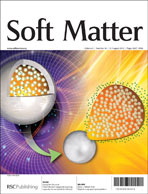One of the distinct biochemical signatures of life is the high chiral preference of biomolecules that compose the organisms, e.g.L-amino acids, D-sugars, L-phospholipids. As a result, many biological and physiological processes are greatly influenced by the chirality of biomolecules. This inspires the introduction of chiral effects into biomaterials research. For this purpose, we developed a novel chiral polymer brush film system containing amino acid units and report that the stereochemistry of the polymer films significantly influences the cell/substrate interaction. With two adhesive cell lines—COS-7 and bEnd.3 as examples, here we report a study of differential cell behaviors on chiral polymer film. We show that the cells can adhere, grow, spread, and assemble much better on the L-amino acid based polymer film than on the corresponding D film, although their chemical and other physical properties are all the same, indicating that the L configuration of the polymer film has better cytocompatibility than the D configuration. It not only implies a novel strategy for the design of new generation of biomaterials and devices based on the chiral effect, but may also add important knowledge to the understanding the origin of chiral preference in biosystems.

You have access to this article
 Please wait while we load your content...
Something went wrong. Try again?
Please wait while we load your content...
Something went wrong. Try again?


 Please wait while we load your content...
Please wait while we load your content...